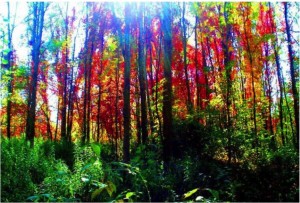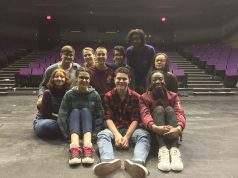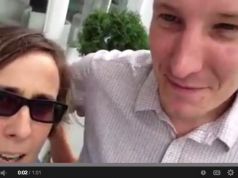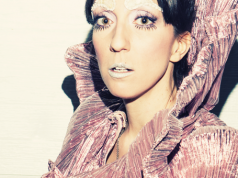
“Art must grow and flower in the land before the country will be a real home for its people.”
In 1920, at the birth of an art movement that would help to shape a nation, the Group of Seven included the above pronouncement in its manifesto created for their first major exhibition.
Their collective statement is both stirring and problematic. It stirs the heart because it suggests a collectivity that might be possible for Canada. It troubles the heart because history has shown that art had already flowered in the land thousands of years prior to the making of this statement.
Where are we now? How do we dream of a collectivity today? Where will we see ourselves reflected back at ourselves? How can we know one another in all the complexity that each of us brings to a life? And, yes, we must try to understand what we mean when we say us.
When we began this show the “we” meant the two of us. But that “we” has already grown, and “we” (now the more than two of us) hope that this trend will continue. Like the stirring and problematic statements of artists past, we hope that new statements as complex and idealistic can be made here, on the SpiderWebShow.
Is it possible we are beginning to exist in a post-geographic landscape? Even if this is only partially true, creates a lot of questions, and a search for some new governing principles. Dates are important. It’s possible the calendar is replacing landscapes as the chief signifier of our shared reality. So here are some dates that have definitely shaped the given circumstances of the SpiderWebShow:
- December 21, 2012. Toronto. Café Novo: A first meeting to talk about dramaturgy as social action.
- January 10, 2013. Ottawa. NAC: A first question: Can there be a national theatre in Canada?
- January – June 2013. Canada: Skype and different cafés: We start to build a show to wrestle with The National Question. Call it the SpiderWebShow. We attempt to build a venue to put it on stage. We set deadlines for opening. We determine that we are not venue builders.
- July 4, 2013. Balzac’s Toronto Reference Library Location: We meet with our newly-minted digital dramaturg. He will build the venue for our show.
- July – October 2013. Canada and beyond: Google Hangouts and more cafés (often opening Balzac’s at several 7:30am “in-persons”): Content curated and contemplated. Many elements arranged and rearranged.
- October 15, 2013 SpiderWebShow.ca opens.
So we live in time. And we imagine space? Even painters needed to imagine a grid to translate what they saw. Maybe now we are learning to apply 1s and 0s (Another way of expressing the grid) to our memory of space.
Theatre, we are told, lives in time and space. Is space, and how we feel about it, changing? How can we, as performance minds meeting at the crossroads of time (which appears to be speeding up but might also be slowing up), and space which seems to be simultaneously shrinking and expanding, respond?
By rooting ourselves in questions and creating a path to follow.
What does dramaturgy as social action mean?
For us it has come to mean creating a space where the possibility of a new kind of Epidaurus, or Circle or Square can exist. We see an ever widening web where performance energy and desire can be concentrated and spread, and where the work itself can grow stronger and more supportive from the breadth of connections made in this space..
How is The SpiderWebShow a show?
Like a show it changes because you are there. It is never ever the same. Like a play with a long run, its shape may be similar to the previous performance, but its essence cannot be repeated. It knows when you are in the audience and no matter how much you love the totality of a moment – you can never recapture it entirely. The SpiderWebShow changes content frequently and changes form with every click.
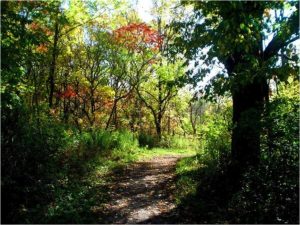
This is the most flexible space either of us has ever worked in. Not only is it flexible it is also generative. This means there is flexibility within the spaces, but we can also build spaces to contain new needs of performance expression. The SpiderWebShow turns the axiom on its head and says: If you come we will build it.
What is a Digital Dramaturg?
Graham will be able to tell you more about that then we can. As novel as the title may sound, he has provided us with the tools to express what we previously could only make etchings and hand gestures about. His knowledge and skills, coupled with his sensitivity and interest in online communication, make him a dramaturg ideally suited to provide digital context for the work.
What up with #CdnCult Times?
We want to lead, follow and hold down an editorial place in a National Conversation About Performance in Canada. We hope it will be a place for connecting our editorial stance on issues and ideas of interest, and we want to link our content to all the other publishers expressing similar interests.
The #CdnCult Times is for and by people across this land and beyond geographic borders that contain the imaginary of Canada. If you have an interest in Canada, and performance connected to Canada, then the #CdnCult Times has an interest in you.
What is a Canadian National Theatre?
Can there be a National aesthetic, approach or voice in an art rooted in a multiplicity of identities? As a multicultural bilingual society that spans a continent, is it possible to maintain a collective connection to performance beyond the pastiche of Mounties and Beavers seen in Olympic Closing Ceremonies? What will we become and how can we express this conception “us” – together and separately?
What do we hope to accomplish?
We are in pursuit of the “we”. Our hope is that the SpiderWebShow and – in particular – #CdnCult Times will open up the conversation in such a way that you will be moved to collaborate in the shaping of this new approach to understanding (or creating a new) “us”.
Sarah and Michael






